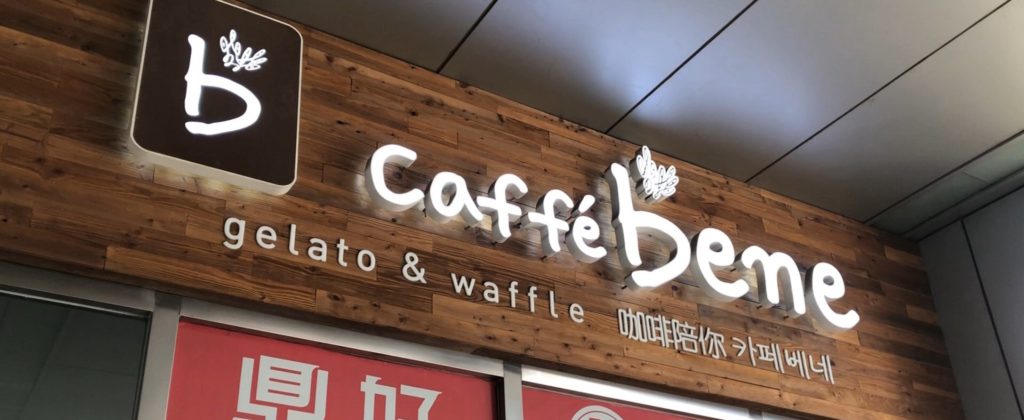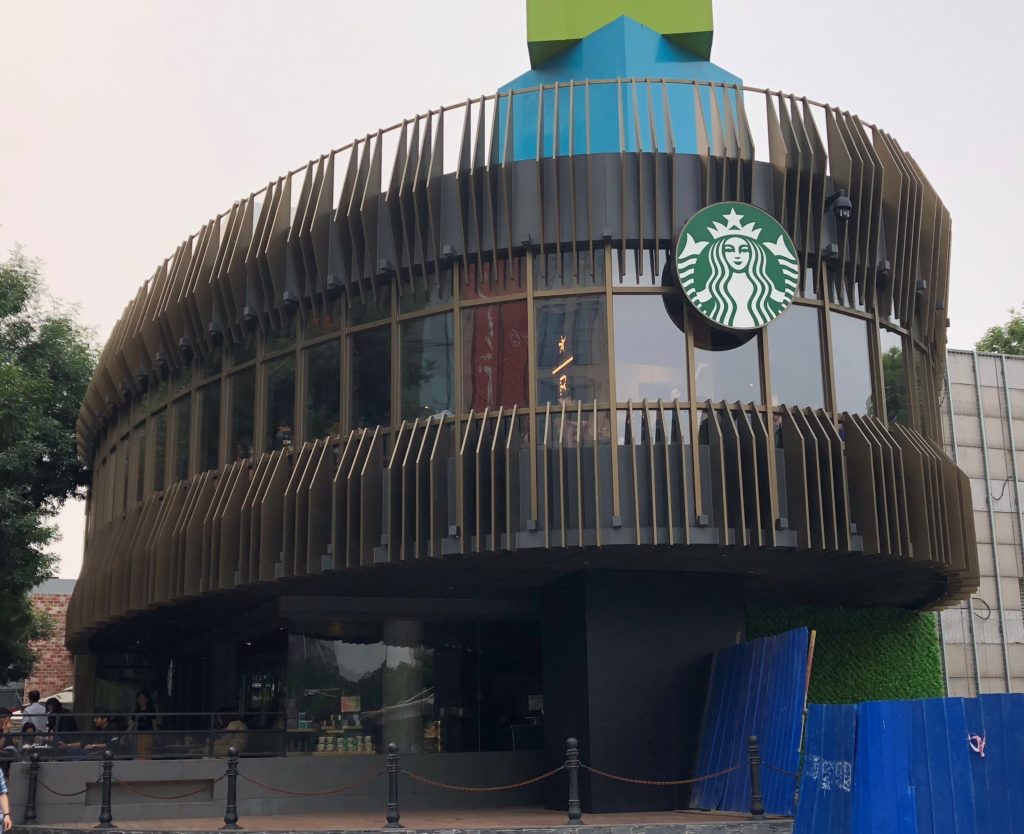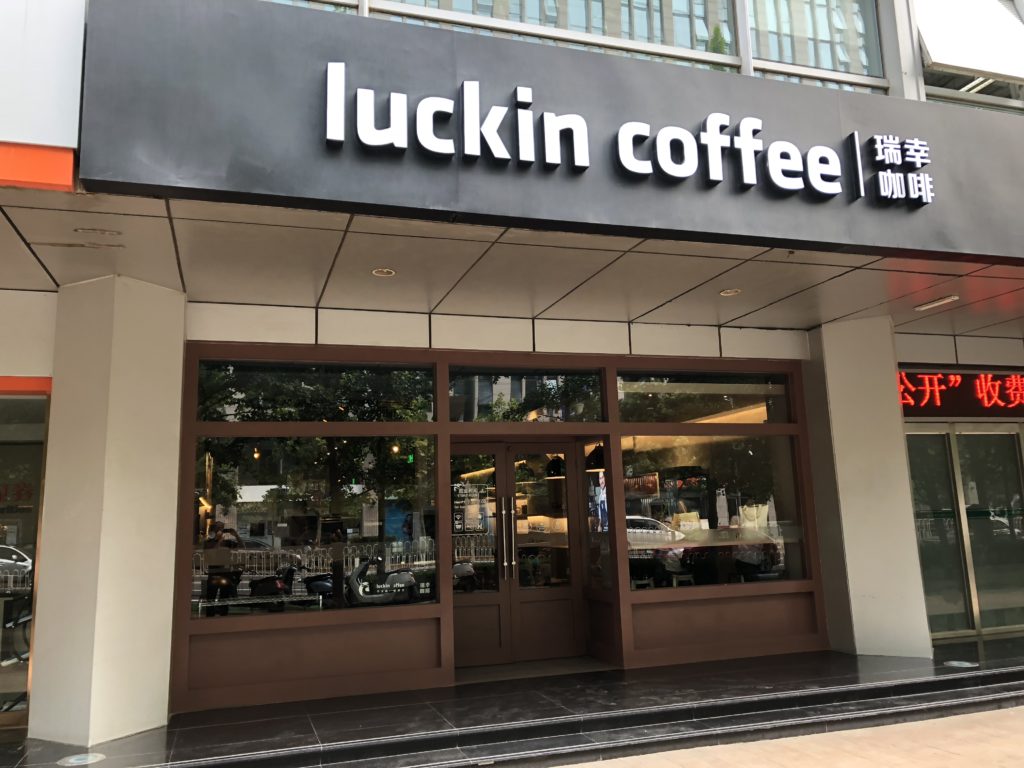In Part 1, I detailed my visits to several Luckin Coffee outlets. This is an aggressive start-up that is opening striving to beat Starbucks in retail coffee in China. So my question for Part 2 is: can they do it?
Let me rephrase that: Could Luckin Coffee take 20% of Starbucks’s current China business?
And my answer is yes. They could. And I will give you argument for this below.
But as I will lay out in Part 3, they don’t really need to do that to win big in China.
First, my take on retail coffee in China
On my way to visit several Luckin outlets in Beijing, I passed lots of other coffee shops. I passed a Costa Coffee, a Bo Coffee and a Caffee Bene. And they all had nice seating areas, free wifi and lots of good coffee.
On the way, I also passed tons of tea kiosks and bubble tea places. And then there are the all the McCafes at all the McDonalds.
So while Starbucks doesn’t have a major competitor in China today, there are certainly lots of smaller companies. So what is Luckin doing differently? And will it make a difference?
If you read the Starbucks 10k’s, the phrase you will see is “high visibility and high traffic locations”. Getting these locations is a big part of their strategy. Yes, Starbucks is selling a product (coffee with lots of sugar and caffeine). But it is also selling an experience, a “third location” in your life to sit and relax and chat.
And key to both the product and the experience is getting these “high traffic and high visibility” locations. People aren’t that loyal to retail coffee. They may like Starbucks (I go everyday) but if a Costa is 2 blocks closer people tend to go there. If Starbucks is on the third floor of the mall and a Bene is on the ground floor, people tend to go there. Brand matters but having the convenient, high visibility and high traffic location is more important.
And these locations tend to be more expensive so the bigger player tends to outspend smaller rivals on real estate. Over time, this superior spending on locations draws more and more of the traffic. The bigger player tends to grind down the smaller players over time. Go to any big developed retail coffee market (New York, London, Hong Kong, etc.) and you’re going to see 2-3 major chains dominating – and not 10-15 smaller chains with equal market share.
So it is not surprising that smaller chains like Costa and Bene coffee don’t seem to be catching up with Starbucks in China. They tend to be on the third floor of the mall and not the ground floor entrance. They tend to be a little away from the walking street and not at the prime location. And their stores tend to be smaller. Starbucks, the dominant player, continues to pull away over time.
How is Luckin different?
In Part 1, I said Luckin’s strategy appears to be: digital + lower prices + tons of locations
I think that matters for two reasons.
First, their 20% lower price point could bring the Starbucks experience (coffee plus a third location in life) to a massive, still largely untapped China market.
Starbucks is expensive in China, approximately same prices as New York, despite being having 1/6th of the GDP per capita. They are an indulgence, a type of affordable luxury. That is a good strategy. But it also means you are waiting for most of the population to rise in wealth and to grow as a coffee drinking demographic (both in number of coffee drinkers and in cups per capita per year).
By offering a similar experience at a lower price point, Luckin could bring a luxury product downmarket. That approach really worked for Xiaomi vs. Apple for the iPhone (more on that below).
Second, digital may matter a lot in retail coffee.
Luckin appears to be betting that they can build a stronger hold on their customers through digital – and that they won’t have to go head-to-head with Starbucks in getting the best real estate. This is a fascinating question. Can software and connectivity trump “high visibility and high traffic” locations in the physical world?
So Luckin is focusing a lot on digital and is opening tons of locations for pickup, sit down and delivery. And they appear to me to be in office parks and 1-2 blocks off from the big shopping malls and walking streets. They don’t seem to be playing the Starbucks game of getting the best locations and opening the biggest outlets. I think they are betting they can use technology plus tons of locations to increase convenience, to capture customers, and to pull their customers to their locations – rather than relying on high traffic and high visibility real estate.
Both of these, if they work, are powerful moves. They could work.
Assuming I have their approach right (just my impression. I could be wrong), I think there are some other things they could do to accelerate growth.
1. Copy Xiaomi: Be a cool company with a lower cost version of a luxury brand.
The iPhone is a luxury brand in China. It is expensive for almost everyone. And it stays above the ongoing smartphone wars of Vivo, Oppo, Huawei and such.
Xiaomi entered with a product that was similar to Apple, but at a lower price and with some very cool marketing. They soared rapidly by bringing a lower cost version of a luxury product to a much bigger market.
As mentioned, Luckin could do the same. They could offer the Starbucks product plus experience at a lower price. And could access a much bigger market. This however would require that they have a lower cost structure. Xiaomi was able to do this with low cost Chinese manufacturing. Luckin would likely have to find a way to drop the real estate and marketing costs (as discussed).
The other thing Xiaomi did was to be very innovative and cool in their marketing. They had flash sales. They generated buzz. They were just seen as cool. And Chinese consumers do tend to jump after the cool new thing. Luckin appears to be doing the same. The are generating a lot of buzz. Everyone knows about them. They could get a lot of customers very quickly.
2. Copy Alibaba: Build and franchise a “new retail” ecosystem for coffee.
Alibaba is currently digitizing and re-imagining supermarkets. The Hema supermarkets are their flagship for this. They are also doing the same for RT-Mart.
However, Alibaba is ultimately not going to be running a bunch of supermarkets. They are developing digital tools that will eventually be rolled out to lots of other grocery stores. They are a data technology company, not an operator.
Luckin could do the same. Once they have perfected their “new retail” model for coffee, they could open up their services and tools to other coffee outlets. That would make them an ecosystem – as opposed to just an online retailer with physical sites. That would let them scale dramatically faster. JD basically did the same thing. They began as an online retailer and then later added a marketplace and ecosystem (about 50% of their GMV now).
This may or may not make sense. It depends on the question of whether there is enough aspects of retail coffee that you can improve with digital tools. Supermarkets have complicated operations and supply chains. Plus you tie in the logistics and delivery. It may be that “new retail” coffee outlets can’t really do that much more than traditional retail coffee outlets.
3. Partner with JD/Tencent: Be the retail coffee part of their ecosystem.
The digital giants of China are fighting to build out the infrastructure of new retail. They are rapidly moving into supermarkets, department stores, convenience stores and mom-and-pop shops. And they are competing ferociously.
Now that Starbucks has partnered with Alibaba, Luckin could just partner with JD – and be their infrastructure for retail coffee. That could be a game changer for Luckin. Suddenly they would be getting tons of traffic online (hello Wechat) that they could drive to their rapidly increasing number of outlets.
***
So hat is my answer to the question of whether “digital + lower price + lots of outlets” could beat Starbucks in China. My answer is yes. This approach has real power to it. And there are lots of moves that could be made.
Of course, none of this answers my one central question: Can Luckin use digital tools to pull customers 1-2 blocks so that they don’t have to compete with Starbucks in expensive, high traffic and high visibility real estate?
- Does the digitization of retail coffee enable you to overcome superior real estate?
- Does software and connectivity stickiness trump real estate as a competitive advantage?
We shall see.
In Part 3, I will argue that it actually doesn’t matter if Luckin beats Starbucks in China. They can win big anyways.
Thanks for reading, jeff
- My Visit to Luckin Coffee: Starbucks’ First Serious Challenger in China. (Pt 1 of 3)
- Luckin Coffee Doesn’t Have to Beat Starbucks to Win Big in China (Pt 3 of 3)
———————-
I write, speak and consult about how to win (and not lose) in digital strategy and transformation.
I am the founder of TechMoat Consulting, a boutique consulting firm that helps retailers, brands, and technology companies exploit digital change to grow faster, innovate better and build digital moats. Get in touch here.
My book series Moats and Marathons is one-of-a-kind framework for building and measuring competitive advantages in digital businesses.
Note: This content (articles, podcasts, website info) is not investment advice. The information and opinions from me and any guests may be incorrect. The numbers and information may be wrong. The views expressed may no longer be relevant or accurate. Investing is risky. Do your own research.






